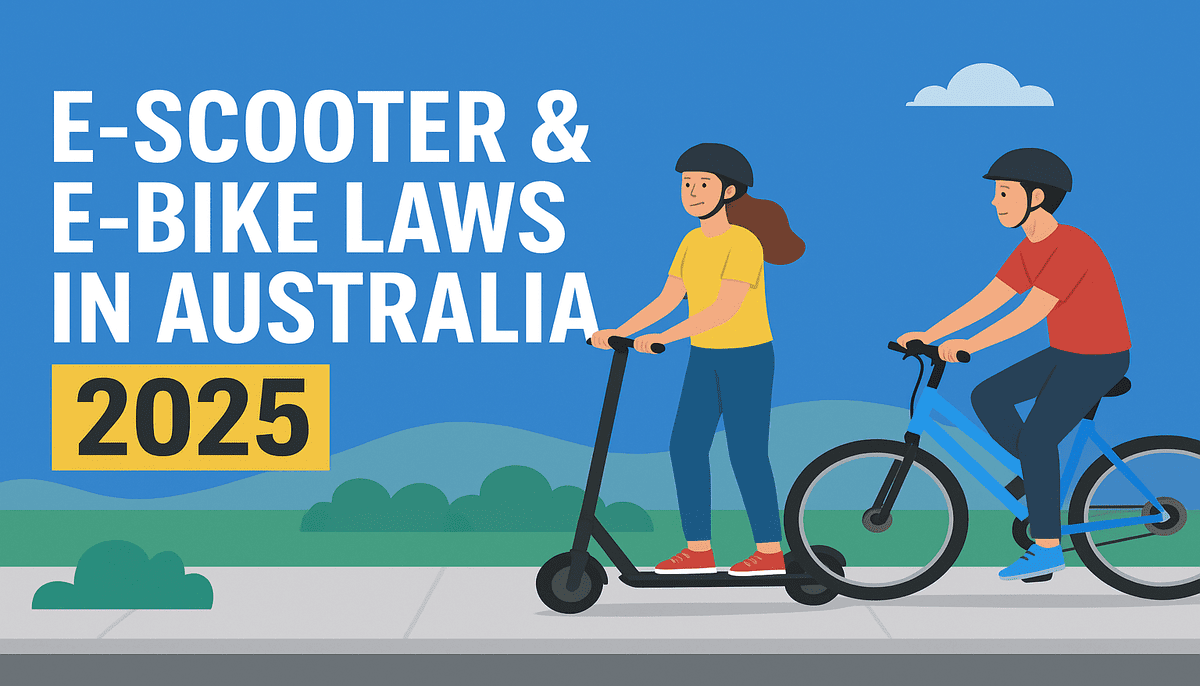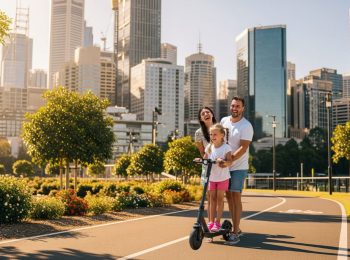E-Scooter and E-Bike Rules in Australia: What You Need to Know Before You Ride
Electric scooters and e-bikes are no longer just a fad in Australia—they’ve become part of everyday life. From teens cruising to a mate’s place to city workers skipping the gridlock on their commute, these small but mighty machines are transforming how we move.
In fact, in New South Wales alone, more than 1.35 million micro mobility devices are on the roads and paths—and at least half of them are helping people connect with public transport. Beyond convenience, there’s another bonus: the NSW government says a third of e-scooter and e-bike trips replace car journeys, cutting fuel costs and emissions. In regional areas, that number jumps closer to half.
But with that freedom comes rules—and the rules aren’t always the same from state to state. Before you jump on your e-bike or hire an e-scooter, it’s worth knowing exactly what you can and can’t do.
First Things First: What Counts as an E-Scooter or E-Bike?
E-Scooters
E-scooters are classed as personal mobility devices (PMDs). That category also covers electric skateboards and even electric unicycles. Unlike regular bicycles, e-scooters:
-
Are designed for one person only
-
Usually have age restrictions depending on your state
-
Require you to wear an approved bicycle helmet
-
Need a bell or horn and lights if you’re riding at night
-
Ban mobile phone use while riding
E-Bikes
E-bikes are a little trickier, because not all are created equal. In Australia, there are two main categories:
-
Throttle-assist e-bikes (≤200W): You pedal, and a small motor gives you a push.
-
Pedal-assist pedelecs (EPACs, ≤250W): The motor helps you move without heavy pedalling, but it must cut out at 25km/h.
Anything more powerful than that? It’s no longer an e-bike under the law—it’s treated as a motor vehicle. That means registration, insurance, and a licence.
The Rules for E-Scooters in Australia (State by State)
This is where it gets complicated. Each state and territory has its own set of laws around where you can ride, how fast you can go, and what age you need to be.
E-scooter rules in NSW (Legal since August 2025)
-
Where: Shared paths, bike lanes, roads ≤50km/h
-
Speed: 20km/h (10km/h on shared paths)
-
Age: 16+
E-scooter rules in Victoria
-
Where: Roads ≤60km/h, bike lanes, shared and separated bike paths (not on footpaths)
-
Speed: Max 20km/h (device capped at 25km/h)
-
Age: 16+
E-scooter rules in Queensland
-
Where: Footpaths, bike/shared paths, local roads ≤50km/h with no centre line
-
Speed: 12km/h on footpaths, 25km/h elsewhere
-
Age: 12+ (supervision until 16)
E-scooter rules in ACT
-
Where: Footpaths and bike/shared paths
-
Speed: 15km/h on footpaths, 25km/h elsewhere
-
Roads: Only when no path is available
-
Age: No limit, but under-12s must be supervised
E-scooter rules in South Australia (Legal since July 2025)
-
Where: Footpaths, bike lanes, local roads ≤60km/h
-
Speed: 10km/h on footpaths, 25km/h elsewhere
-
Age: 16+
E-scooter rules in Tasmania
-
Where: Footpaths, shared/bike paths, local roads ≤50km/h
-
Speed: 15km/h on footpaths, 25km/h elsewhere
-
Age: 16+ (under-16s limited to ≤200W, ≤10km/h)
E-scooter rules in Western Australia
-
Where: Footpaths, bike lanes, shared paths, local roads ≤50km/h
-
Speed: 10km/h on footpaths, 25km/h elsewhere
-
Age: 16+
E-scooter rules in Northern Territory
-
Only hire e-scooters (like Beam) are legal in public. Private e-scooters are banned.
-
Where: Footpaths, bike/shared paths
-
Speed: 15km/h
-
Age: 18+
The Rules for E-Bikes in Australia (Mostly the Same Everywhere)
Unlike e-scooters, e-bike laws are fairly consistent nationwide. Almost every state recognises the 200W throttle-assist and 250W pedelec EN15194 standard. The key is that the motor must cut out at 25km/h (or 6km/h if you’re not pedalling).
A quick breakdown:
-
E-bike rules in NSW: Allows throttle up to 200W, pedelec up to 500W in some cases
-
E-bike rules in Victoria, QLD, SA, TAS: Stick to 200W throttle and 250W pedelec
-
E-bike rules in WA: Only pedal-assist, 250W max, age 16+
-
E-bike rules in ACT & NT: Treated like bicycles, with similar wattage limits
The golden rule? If your e-bike fits these wattage and speed cut-offs, you can ride it anywhere a normal bicycle can: bike lanes, shared paths, and most roads.
Why These Rules Matter
It’s tempting to just hop on and ride, but the laws exist for a reason. E-scooter injuries have spiked, with Victoria alone reporting over 1000 hospital admissions a year. When you’re sharing space with pedestrians, cyclists, and cars, speed and location rules help keep everyone safe.
And remember, what’s legal in one city may get you fined in another. Brisbane allows e-scooters on footpaths, but Sydney doesn’t. In Darwin, your private scooter has to stay at home, while in Hobart you’re free to ride—just mind the 15km/h footpath limit.
The Bottom Line
If you’re on an e-bike, the rules are simple: keep it under the wattage limits, stick to 25km/h, and ride where bicycles can ride.
If you’re on an e-scooter, the rules shift dramatically depending on where you are. Before you head out, check your local laws—what’s fine in Melbourne could cost you in Sydney.
At the end of the day, e-scooters and e-bikes are reshaping how Australians get around. They’re cheaper than cars, cleaner for the planet, and often faster in traffic. But staying on the right side of the law keeps the ride smooth—for you and everyone sharing the road.












